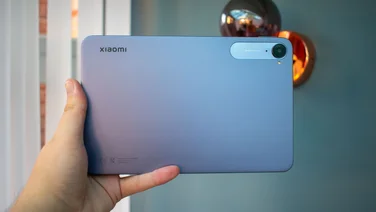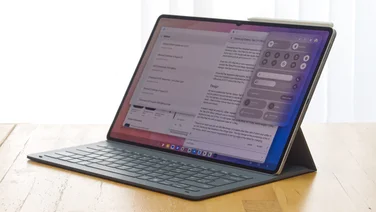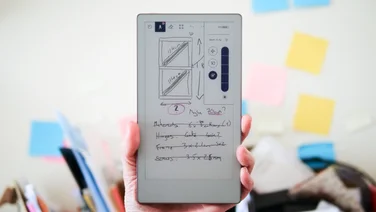To help us provide you with free impartial advice, we may earn a commission if you buy through links on our site. Learn more
- Best iPad for drawing: At a glance
- How to choose the best iPad for drawing
- The best iPad for drawing you can buy in 2023
- 1. Apple iPad mini (6th generation, 2021): Best iPad for drawing on the go
- 2. Apple iPad (9th generation, 2021): Best budget iPad for drawing
- 3. Apple iPad (10th generation): Best mid-range iPad for drawing
- 4. Apple iPad Air (5th generation, 2022): Best semi-pro iPad for drawing
- 5. Apple iPad Pro (M2, 2022): The ultimate drawing tablet

The iPad family is growing. There are now five distinct models from which to choose, from the diminutive iPad mini to the powerful iPad Pro. Which is the best iPad for drawing?
Perhaps you’re a street sketcher who needs a device for capturing ideas and inspiration, to be worked up into a finished piece when you get home. Or maybe you want an iPad for everything, from doodling in your downtime to producing press-ready artwork to send to a printing house.
What can you afford to spend and what will this buy you? Do specs really matter? And are colour gamut and resolution really all that important? If you’ve found yourself pondering these questions, here’s where you’ll find some answers.
Best iPad for drawing: At a glance
- Best iPad for drawing on the go: Apple iPad mini (6th generation, 2021) | £749
- Best budget iPad for drawing: Apple iPad (9th generation, 2021) | £549
- Best mid-range iPad for drawing: Apple iPad (10th generation) | £679
- Best semi-pro iPad for drawing: Apple iPad Air (5th generation, 2022) | £819
- The ultimate drawing tablet: Apple iPad Pro (M2, 2022) | from £899
How to choose the best iPad for drawing
Which Apple Pencil should I choose?
One of the biggest differentiators between the various iPads, aside from screen size, is Apple Pencil support. The original Apple Pencil shipped in November 2015 and worked with the original iPad Pro. Still on sale, it has a Lightning connector at the blunt end, hidden beneath a cap, which is used for charging and pairing. It’s comfortable and well balanced with a perfectly cylindrical barrel, and it’s compatible with all iPads with a Lightning port, plus the tenth-generation iPad.
The second-generation Apple Pencil shipped three years later. Like the first Pencil, it communicates via Bluetooth, but, in addition to the touch-sensitive tip, it has a tap-sensitive area on the barrel that can be programmed to perform specific functions in various creative apps. This Pencil is supported by the current-generation iPad Pro, iPad Air and iPad mini.
The Apple Pencil 2 was also subtly redesigned: it’s the same diameter and weight as the first-generation device, but 10mm shorter (166mm versus 176mm). It also has a flat section running along its length, which stops it rolling across your desk and provides a surface for “docking” with the magnetic edge connector on compatible iPads. Handily, it charges when docked, so there’s no need to plug it in.
- First-generation Apple Pencil – £109
- Second-generation Apple Pencil – £139
- Replacement tips – £19 for a pack of four
What should I look for when buying a stylus?
At its most basic, the Apple Pencil – or any other stylus – is a finger replacement. You can use it to tap, write and draw on the screen. However, as it also connects to the iPad via Bluetooth, it can send data about its orientation and how hard you’re pressing, which your finger can’t do. Apps can then make use of this information to tailor the active tool, so a digital brush in a painting app could lay down thicker lines when you press harder, or a pencil could shade, rather than draw, if you tilt the Pencil beyond a certain angle.
These features aren’t unique to Apple Pencil or iPad, so they’re worth looking out for whichever tablet and stylus combination you’re buying. Bear in mind that they do rely on ongoing communication between the stylus and tablet, so you won’t have the same experience using an unpowered stylus with a capacitive nib, nor if the app doesn’t make use of the additional data.
What screen size and type to look for?
At 8.3in, the iPad mini’s screen is both the smallest and the lowest resolution, but don’t write it off – at 326ppi, it beats the other iPads hands-down on pixel density. Its siblings each share a density of 264ppi which, although enough to make individual pixels imperceptible in regular use, is still 20% down on the iPad mini.
Beyond resolution, it’s worth considering the different screen technologies. The ninth-generation iPad has what Apple calls a Retina display, which is a term it introduced with the iPhone 4 to describe any screen on which it’s impossible to spot the pixels at average viewing distances. In this case, the 10.2in panel uses an LED-backlit display with IPS technology to deliver an sRGB image with 500 nits maximum brightness. The sRGB standard was developed by HP and Microsoft in the 1990s and is the standard colour space in use across the web.
The tenth-generation iPad, iPad mini, iPad Air and 11in iPad Pro each have a Liquid Retina display, in which the screen is an LCD panel. This still delivers an sRGB image on the tenth-generation iPad, but on the iPad mini, iPad Air and 11in iPad Pro, it produces a P3 wide colour gamut image, with broader red and green spectrum coverage.
The 12.9in iPad Pro is the odd one out, having a Liquid Retina XDR display, which achieves a contrast ratio of 1,000,000:1 with 1,000 nits of full screen brightness. This should deliver the truest possible image, with subtle changes between similar tones and greater differentiation overall.
What other features should I look for?
- Keyboard support: You can use any iPad with a separate Bluetooth keyboard but, if you want an official Apple keyboard, the ninth-generation iPad supports the older Smart Keyboard, while the tenth-generation iPad, iPad Air and both iPad Pro models support the Magic Keyboard, which we consider a more comfortable device overall as the experience is more akin to using a regular Mac or PC keyboard.
- Wireless networking: Although every iPad can connect to a wireless network, there are differences between them. The ninth-generation iPad can access Wi-Fi 5 networks at up to 866Mbits/sec, but its successor, the tenth-generation device, as well as the iPad Air and iPad mini, can connect to Wi-Fi 6 at up to 1.2Gbits/sec. Only the two iPad Pro models can exploit the latest Wi-Fi 6E technology to support speeds of up to 2.4Gbits/sec.
- Cellular connectivity: Not everyone needs to connect to the cellular network, and even those who do could set up a hotspot using their phone (subject to contract restrictions). If you do want a tablet with cellular connectivity built in, note that the ninth-generation iPad only supports 4G LTE connections, while each of its siblings support 5G where there’s coverage.
- Security: You can unlock your iPad with a pin or you can use biometrics. On the ninth-generation iPad, the Home button supports Touch ID, but this was moved to the top button for the tenth-generation device, iPad Air and iPad mini. Only the two iPad Pro models can use facial recognition to unlock.
READ NEXT: Best tablet
The best iPad for drawing you can buy in 2023
1. Apple iPad mini (6th generation, 2021): Best iPad for drawing on the go

Price: £749 | Buy now from John Lewis
The iPad mini, as the name suggests, is the smallest member of the family. Currently on its sixth generation, it supports Apple Pencil 2, has an 8.3in Liquid Retina display, and is built around an A15 Bionic chip. This is the same processor that powers the iPhone 13 and 14, the third-generation iPhone SE, and third-generation Apple TV 4K – so it’s no slouch. Apple says it’s 40% faster than the A12 Bionic chip that powered the previous-generation iPad mini.
The sixth-generation iPad mini also has a larger, higher-resolution screen than its predecessor, which was just 7.9in. However, the sixth generation’s 2,266 x 1,488 resolution delivers a pixel density identical to that of the 2,048 x 1,536 resolution of its predecessor: 326ppi. All other iPads, right up to the mammoth iPad Pro 12.9in, share the same lower pixel density of 264ppi, although in practice this should make little difference to the drawing experience. Of greater relevance will be the degree to which you may need to zoom in and out of your work due to the smaller physical dimensions.
The iPad mini is available in two capacities – 64GB and 256GB – starting at £569 for a Wi-Fi only device with 64GB memory, or £749 if you also want cellular connection. Although you can offload a lot of your artwork to the cloud, 64GB might eventually feel a bit tight, so we would recommend considering the 256GB model. This starts at £749 for the Wi-Fi only device.
Read our full Apple iPad mini (6th generation, 2021) review for more details
Key specs – Screen size: 8.3in; Processor: A15 Bionic chip, 6-core CPU, 5-core GPU; Camera: 12MP back camera, 12MP front camera; Connector: USB-C; Biometrics: Touch ID in top button; Connectivity: 5G cellular and Wi-Fi up to 1.2Gbits/sec; Apple Pencil support: Second generation
2. Apple iPad (9th generation, 2021): Best budget iPad for drawing

Price: £549 | Buy now from John Lewis
If the iPad mini’s 8.3in display is too small for you, take a look at the ninth-generation iPad. You will not only up the display size, but you can also pocket a saving of £200 to £240, depending on the memory and connectivity configuration you opt for.
Like the iPad mini, the ninth-generation iPad comes with either 64GB (costing £349) or 256GB storage – and again, we would recommend the 256GB model as the most practical choice for anyone creating hefty artwork. These will set you back £549 for the Wi-Fi only model, or £699 for the model with 4G, although we think this is an unnecessary extra expense.
Where the iPad mini is built around the A15 Bionic chip, the ninth-generation iPad’s processor is older. The A13 Bionic runs at a maximum speed of 2.65GHz, compared to the 2.93GHz of the A15 inside the iPad mini. This iPad also has an sRGB display, with a slightly narrower colour gamut than the P3 display used in the mini, iPad Air and iPad Pro.
Perhaps more importantly, the ninth-generation iPad is only compatible with the first-generation Apple Pencil. While this device creates more accurate sketches than you would achieve with your fingers and thumbs, it lacks the tappable areas on the barrel that the second-generation model offers, which would have let you put various shortcuts within easy reach.
Read our full Apple iPad (9th generation, 2021) review for more details
Key specs – Screen size: 10.2in; Processor: A13 Bionic chip, 6-core CPU, 4-core GPU; Camera: 8MP back camera, 12MP front camera; Connector: Lightning; Biometrics: Touch ID in Home button; Connectivity: 54 LTE cellular and Wi-Fi up to 866Mbits/sec; Apple Pencil support: First generation
3. Apple iPad (10th generation): Best mid-range iPad for drawing

Price: £679 | Buy now from John LewisThe tenth-generation iPad is slightly bigger than its predecessor, with a 10.9in display, and slightly higher vertical and horizontal resolution. The additional 0.7in of physical screen space and 371,000 pixels effectively cancel each other out when calculating pixel density, though, so when it comes to image sharpness the newer iPad is the same as the old one.
The tenth-generation device shaves a couple of millimetres off its predecessor’s height and half a millimetre off its thickness but gains just over 4mm in width. It’s also 10g lighter if you’re opting for the Wi-Fi-only device, or 17g lighter if you’re rolling in the 5G connectivity. These are small differences but they may be something to consider if you hold your iPad in one hand when drawing.
As with its predecessor, the tenth-generation iPad has an sRGB display and is only compatible with the first-generation Apple Pencil, which lacks the tap-sensitive barrel. However, where the ninth-generation iPad comes with a Lightning connector for charging the Pencil, the tenth-generation tablet has a USB-C charging port, which necessitates the use of an adapter. This wasn’t included with the Pencil before the tenth-generation iPad shipped, which is something to bear in mind if you’re tempted to buy one second-hand.
Internally, the processor is an A14 Bionic chip, which has improved graphics performance over its predecessor and can connect to 5G networks, where the ninth-generation device could only connect to 4G. This might have little bearing on your drawing experience unless you’re frequently downloading assets and uploading finished artwork while away from Wi-Fi.
At £679 for Wi-Fi only and £859 for Wi-Fi plus cellular, with 256GB of storage in each case, the tenth-generation iPad commands a premium of between £139 and £160 over its predecessor. The 64BG model comes at the lower price of £499. It’s certainly a better device, in large part because of the faster processor, but its compatibility with the Magic Keyboard Folio is also appealing even if not directly relevant to drawing. That makes this a good mid-range option for anyone who can’t stretch to an iPad Air.
Read our full 10th generation Apple iPad review for more details
Key specs – Screen size: 10.9in; Processor: A14 Bionic chip, 6-core CPU, 4-core GPU; Camera: 12MP back camera, 12MP front camera; Connector: USB-C; Biometrics: Touch ID in top button; Connectivity: 5G cellular and Wi-Fi up to 1.2Gbits/sec; Apple Pencil support: First generation
4. Apple iPad Air (5th generation, 2022): Best semi-pro iPad for drawing

Price: £819 | Buy now from John Lewis
The screen on the iPad Air is the same size and resolution as that on the tenth-generation iPad, but the additional £170 you’ll pay for the 256GB device is still easy to justify.
For starters, it’s compatible with the second-generation Apple Pencil. The screen is also fully laminated and has an anti-reflective coating, which should make it more pleasant to draw on in a wider range of environments. And it has a P3 display with a wider colour gamut than the plain ninth- and tenth-generation iPads, which maximises the spectrum, particularly in red and green tones.
Internally, the iPad Air has a significantly more powerful processor than either the ninth- or tenth-generation iPads, in the Apple M1. This has eight cores, compared to six in the other iPads, and an eight-core GPU, which compares favourably to the four-core GPUs in either iPad. It’s also more powerful than the iPad mini.
While we wouldn’t hesitate to use any iPad as a drawing platform, the iPad Air really hits the sweet spot, combining an impressive processor with support for the second-generation Pencil and a large screen. It’s £819 for the 256GB Wi-Fi model (or £649 for the 64GB model), which works out £200 cheaper than the equivalent capacity iPad Pro 11in.
Read our full Apple iPad Air (5th generation, 2022) review for more details
Key specs – Screen size: 10.9in; Processor: M1 chip, 8-core CPU, 8-core GPU; Camera: 12MP back camera; 12MP front camera; Connector: USB-C; Biometrics: Touch ID in top button; Connectivity: 5G cellular and Wi-Fi up to 1.2Gbits/sec; Apple Pencil support: Second generation
5. Apple iPad Pro (M2, 2022): The ultimate drawing tablet

Price: From £899 | Buy now from John Lewis
The iPad Pro is an anomaly in that it’s not only available in a variety of capacities, but also two screen sizes: 11in and 12.9in.
They’re built around the powerful M2 chip and both give you a larger workspace than any other iPad (although the 11in device is only slightly larger). That should mean you spend less time pinching and panning your artwork, and certainly less than you would on, say, the iPad mini. The screens themselves have the same wider colour gamut as the iPad Air and iPad mini, and they have an anti-reflective coating, full lamination and are fingerprint-resistant.
Perhaps the most appealing feature, though, is their support for the Apple Pencil’s “hover” feature, which can detect the point of an Apple Pencil 2 up to 12mm away from the screen surface. At this distance, it can discern the Pencil’s angle, allowing compatible apps to overlay the interface with previews of what will happen when the tip touches the surface. So, you could hover over an empty space in your latest design, see how your active tool will fit, and dynamically adjust the size of the mark it will make, all before committing yourself. For serious graphic artists, a feature like this allows for greater precision and predictability, with less trial and error.
The iPad Pro can also connect to a compatible external display up to 6K resolution. At this point it’s starting to behave more like a regular desktop computer, effectively making it two devices in one – you can start your designs on the iPad screen while on the move, and finish them on an external display when you get back to your desk.
Prices start at £899 for the 128GB, Wi-Fi-only, 11in device and stretch to £2,679 for the 12.9in, 2TB model with both Wi-Fi and cellular connectivity. For comparison with other models mentioned here, the 11in 256GB device costs £1,019 and £1,199 with and without cellular connectivity, while the 12.9in iPad Pro costs £1,369 and £1,549 respectively. For that, you’re getting an impressive piece of hardware that should remain your creative companion for the next several years. It’s a tempting proposition indeed.
Read our full Apple iPad Pro review for more details
Key specs – Screen size: 11in and 12.9in; Processor: M2 chip, 8-core CPU, 10-core GPU; Camera: 12MP wide back camera; 10MP ultrawide back camera; 12MP front camera; Connector: USB-C with support for Thunderbolt/USB 4; Biometrics: Face ID; Connectivity: 5G cellular and Wi-Fi up to 2.4Gbits/sec; Apple Pencil support: Second generation






